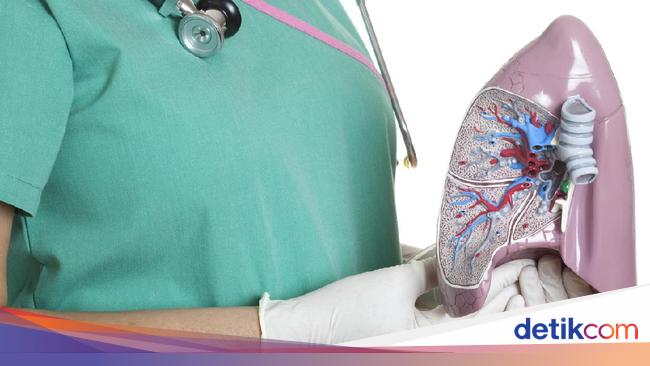Jakarta – Detikers, of course you already know that breathing is one of the important vital signs in the body of living things, including humans, right? Basically, if a person has difficulty breathing, there must be a problem with his health, especially with his human respiratory system.
In general, human respiratory system is a group of organs that work in exchange of oxygen gas and carbon dioxide in the blood. Under normal conditions, a person’s respiratory rate is 12 to 20 times per minute, which takes place continuously or continuously.
In general, human respiratory system divided into two parts, namely the upper respiratory system and the lower respiratory system.
1. Upper respiratory system.
Included in the upper respiratory system in humans are as follows:
- Nasal cavity
- Sinuses (cavities inside the bones of the head that contain air)
- Faring
- Larynx
2. Lower respiratory system.
Meanwhile, what is included in the lower respiratory system are:
- Trachea
- Lungs
- Bronchi
- Diaphragm
How the Human Respiratory System Works
When working, the human respiratory system will involve all respiratory organs, both in the upper and lower respiratory system. All these organs together will work to help the process of gas exchange in the body between the lungs and blood vessels.
Then, the gas will be flowed to all parts of the body or will be blown out into the air.
Way of work human respiratory system is as follows:
- When you inhale, this process is also known as inhalation or inspiration. Here, the diaphragm and the muscles between the ribs contract. The chest cavity will expand so that the lungs expand and fill with air.
- Air from outside enters through the nasal cavity and mouth. With the help of fine hairs in the nasal cavity, the incoming air will be filtered so that small particles will not enter. The air then enters the trachea.
- Air from the trachea will then continue to enter the lungs through the bronchi and bronchioles, which are a series of branches found in the lungs, and culminate in the alveoli.
- When the air you breathe has reached the alveolus, this is where the gas-oxygen and carbon dioxide exchange process – occurs, to be precise in the capillaries or small blood vessels.
- Oxygen will enter the capillaries, and then will flow to the heart by “riding” red blood cells. From the heart, oxygen will be pumped together with blood throughout the body. Meanwhile, carbon dioxide exits the capillaries and into the lungs.
- Once the process of exchanging oxygen and carbon dioxide has been completed, the diaphragm and rib muscles will relax again. As a result, your chest cavity will also return to normal (no longer expand). At this time, the air which contains carbon dioxide will be pushed out of the alveolus to the bronchioles, bronchi, trachea, and finally exhaled through the nasal cavity.
However, did you know that the human respiratory system not only works in the process of exchanging air and gas, but also to maintain and balance the internal body’s condition so that it is always stable? This is what is called homeostasis in medical terms.
Well, that’s a summary of the brief explanation about human respiratory system, the organs of the respiratory system, and how they work. Hopefully the information is useful, yes!
(pal/pal)
– .


